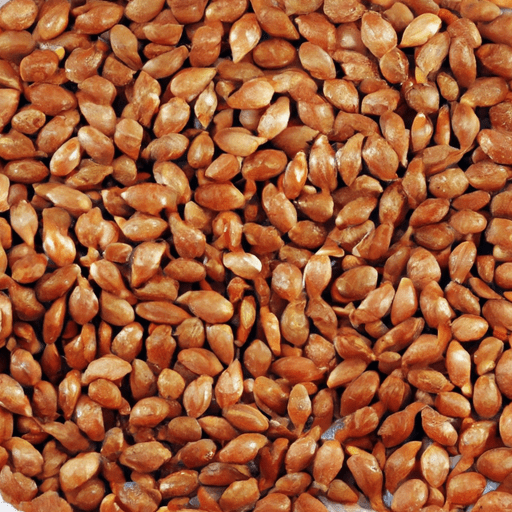Exploring the Delightful World of Charoli Nuts
When it comes to adding a touch of sophistication and texture to your dishes, it’s hard to beat the charm of charoli nuts. These tiny treasures hail from the Indian subcontinent and have been cherished for their unique flavor and versatility in various cuisines for centuries. Known by various names like chironji or charoti, charoli nuts have a fascinating history and a plethora of culinary uses that make them a must-have ingredient in any kitchen.
The Taste and Texture
Charoli nuts are small, almond-shaped seeds that come from the fruit of the Buchanania lanzan tree. Although they share a resemblance with almonds and have a mild almond flavor, charoli nuts possess a distinctive taste that sets them apart from other nuts. They have a slightly sweet and earthy profile with undertones of pistachio and pine nuts, making them incredibly versatile in both sweet and savory recipes.
Culinary Uses
These petite nuts are highly valued in Indian cuisine and are extensively used in a variety of dishes, particularly in the northern and western regions of the country. Charoli nuts are often added to traditional desserts, like kheer (a creamy rice pudding), rabri (sweet condensed milk), halwa (a dense sweet dish), and barfi (an indulgent milk-based sweet).
Beyond desserts, charoli nuts find their way into savory recipes and spice blends. They are a key ingredient in Mughlai cuisine, lending their subtle crunch and nutty flavor to dishes like biryani, korma, and various rich gravies. Their ability to absorb and complement the flavors of spices makes them an excellent addition to both vegetarian and non-vegetarian curries, adding an unexpected element of complexity.
Nutritional Value
Apart from their culinary prowess, charoli nuts possess impressive nutritional benefits. These little powerhouses are packed with essential nutrients, including healthy fats, proteins, and dietary fiber. They are also a great source of vitamins and minerals, such as vitamin C, vitamin E, calcium, phosphorus, and iron. Incorporating charoli nuts into your diet can boost heart health, aid digestion, and provide a steady release of energy.
History and Fun Facts
Charoli nuts have a long and storied history in Indian culture. They have been cherished for their medicinal properties and are believed to have cooling effects on the body, making them a popular ingredient in Ayurvedic remedies. Additionally, charoli nuts have been traditionally used in Indian weddings as a symbol of fertility and prosperity.
Interestingly, charoli nuts are native to India and are also grown in neighboring countries like Nepal and Myanmar. They are predominantly harvested during the summer months and are then dried, shelled, and made available for sale in local markets and specialty stores.
Incorporating Charoli Nuts in Your Cooking
Now that you know about charoli nuts’ unique taste, culinary uses, nutritional value, and interesting history, it’s time to explore these delightful nuts in your own kitchen. Whether you’re adding them to a creamy dessert, a fragrant curry, or using them as a garnish for salads and rice dishes, charoli nuts provide a delightful crunch and a burst of flavorful goodness.
Remember to store them in an airtight container in a cool, dry place to maintain their freshness and taste. And don’t hesitate to experiment and get creative with charoli nuts – their versatility will never disappoint!
So the next time you’re looking to elevate your cooking and add a touch of elegance, don’t forget to grab a handful of charoli nuts. These tiny wonders will surely lend a memorable twist to your culinary endeavors. Happy cooking!
Charoli Nuts
Origin: Charoli nuts, scientifically known as Buchanania lanzan, are native to parts of the Indian subcontinent, specifically India, Nepal, and Burma (Myanmar). These small, almond-sized nuts are derived from the Charoli tree, which is an evergreen tree belonging to the family Anacardiaceae.
Common Uses: Charoli nuts have a rich and nutty flavor, similar to almonds, making them a popular ingredient in Indian cuisine. They are commonly used in both savory and sweet dishes. Charoli nuts can be lightly roasted or fried, enhancing their natural flavor, and then used as a topping or garnish for various dishes. They are often included in desserts, such as traditional Indian sweets, ice creams, or used in rice dishes like biryani.
Nutritional Benefits: Charoli nuts are nutrient-dense and offer various health benefits. They are a good source of healthy fats, protein, fiber, and essential minerals such as calcium, iron, and magnesium. These nuts provide a moderate amount of B-complex vitamins, including niacin, thiamin, and riboflavin. Charoli nuts are also rich in antioxidants, such as vitamin E, which helps protect cells from damage caused by free radicals.
Unique Properties: Charoli nuts have a distinct delicacy due to their small size and soft texture. They are often referred to as “chironji” nuts in Hindi, and their shape resembles tiny watermelon seeds. One interesting property of charoli nuts is that they can be ground into a paste and used as a thickening agent in some recipes, similar to how almonds or cashews are used. Additionally, these nuts are sometimes used in traditional Ayurvedic medicine for their potential medicinal properties.
Historical Significance: Charoli nuts have been used in Indian culinary traditions for centuries. They are frequently mentioned in ancient Indian texts, such as the Ayurvedic text Charaka Samhita, which gives them a historical significance. These nuts have been an integral part of Indian cuisine for their unique flavor and versatility, contributing to the rich cultural heritage of the region.




Use the share button below if you liked it.
It makes me smile, when I see it.